Patio peonies: varieties and their cultivation

The ornamental peony plant is popular for its long flowering and ease of maintenance. The Patio view is not the last in popularity, it is distinguished by low-growing varieties and is presented in a rich varietal variety.
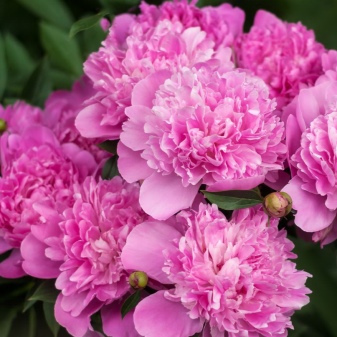
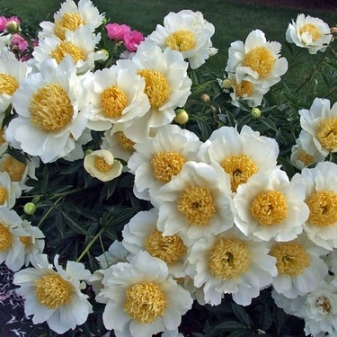
Characteristic
Patio peonies attract attention not only during the flowering period, but also during the growing season. These miniature bushes fit perfectly into small flower beds, decorate patios and porches. Some varieties can be grown in containers.
This species is considered to be herbaceous peonies. In spring and summer, they are the main decoration of any flower bed. Of the main advantages that patio peonies can boast, we can single out:
- strong peduncles, so there is no need for additional organization of supports;
- each bush is compact and small in size;
- flowers have a delicate, unobtrusive scent.
The height of such flowers ranges from 600 to 1200 mm. It is not easy to grow peonies at home, since it takes a lot of space for the development of a bush, however, the presented species has a modest size, hence its increased popularity. The root system develops small, so it becomes real to grow peonies in a pot.
Breeders offer a rich palette of colors, there are varieties of pale white and maroon, red, pink in the assortment.
The buds have different shapes, they can be double and simple.


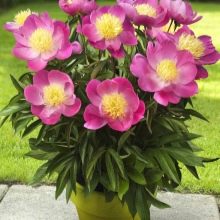
Views
Among the best varieties on the modern market, it is worth highlighting the following representatives of patio peonies.
"London"
A dwarf plant ideal for potting. There are two types of petals on the flower: the lower ones are larger, the upper ones are smaller, forming a core. The color of the bud is intense dark red.
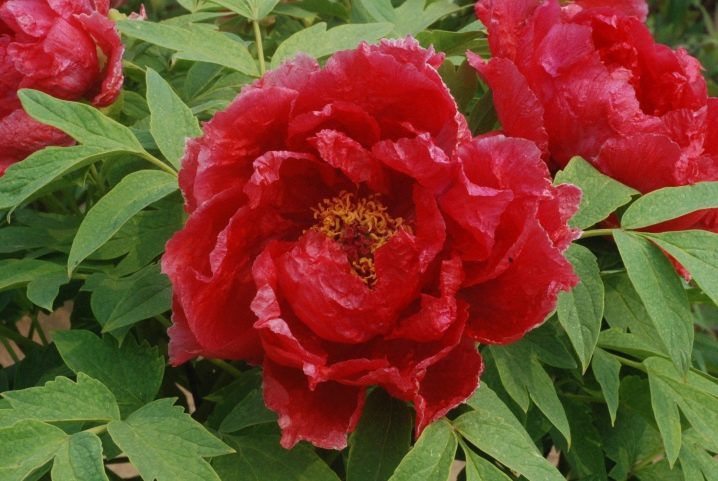
"Oslo"
Will delight lovers of crimson flowers. The variety is popular for its early flowering. Bushes grow even if not provided with proper care, they can reach 55 mm in height. Support for peduncles is not needed.
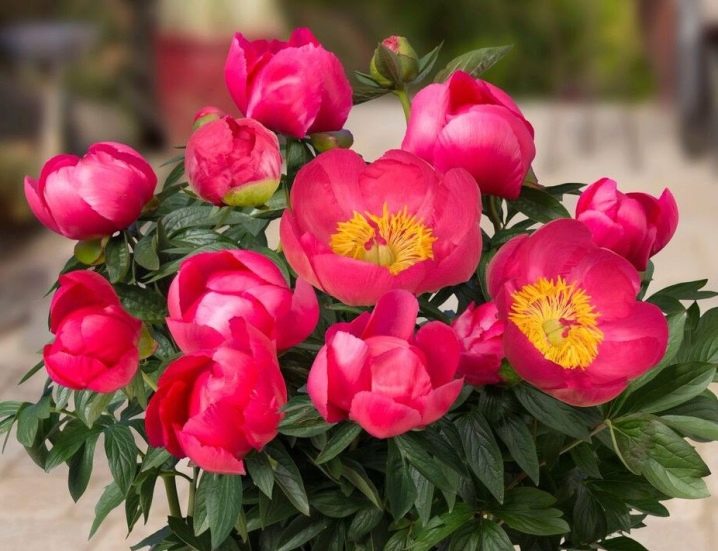
"Athens"
Peony with a very attractive, neat bush shape. It blooms earlier than most other varieties, the petals of the flowers are deep pink, have a pleasant aroma.
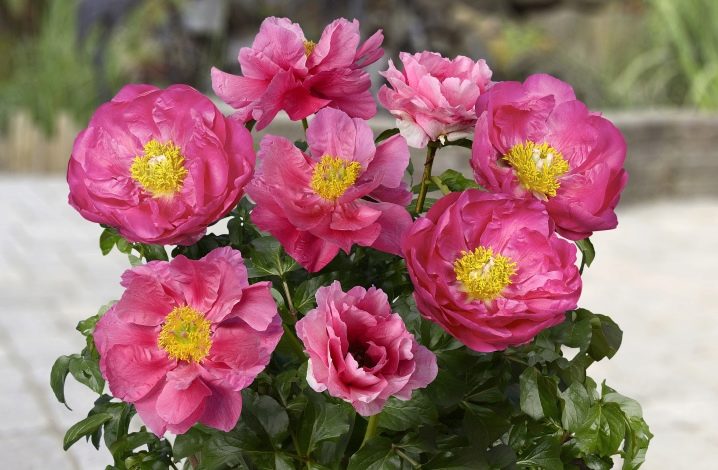
"Dublin"
This plant is distinguished by its late flowering. The buds are of a delicate white shade, with yellow petals in the middle. After cutting, the peony does not get sick.
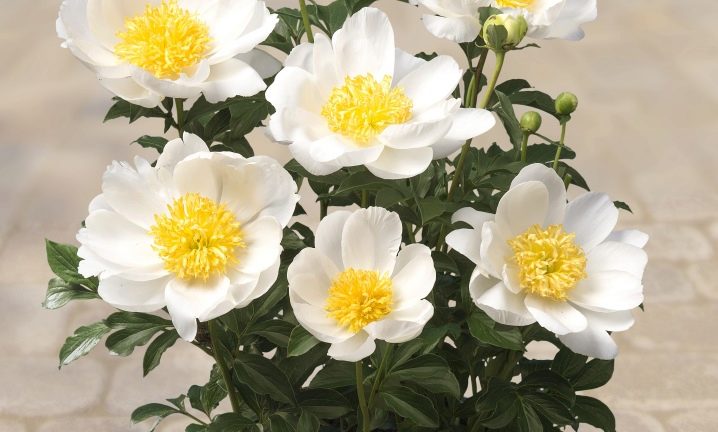
"Madrid"
It blooms at almost the same time as the previous variety. The bushes form compact, the flowers are not pure white, but slightly creamy with a yellow core.
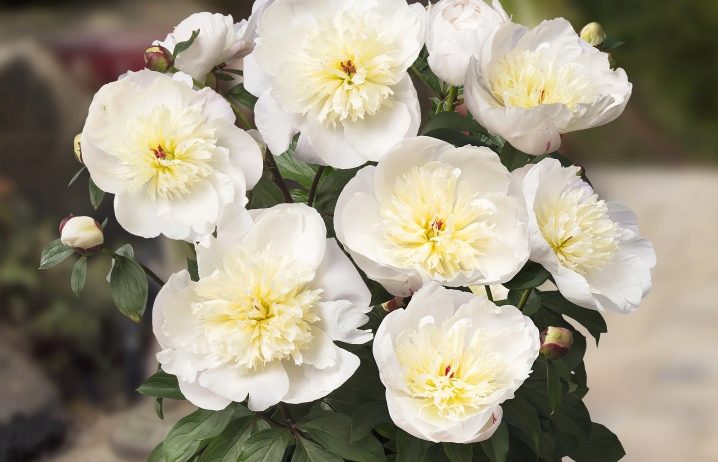
"Moscow"
This peony will delight you with a bright red color, has an average flowering. The buds are bicolor, the middle is yellow, it contrasts beautifully with the main shade. The buds are semi-double, they sit on strong peduncles, so no garter is required.
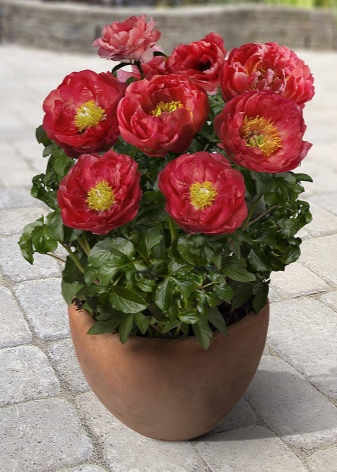
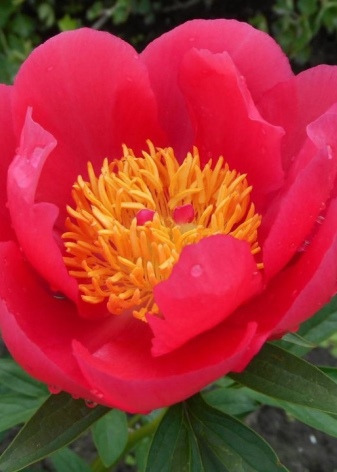
Jan Van Leuven
According to the description, it has a long flowering period. Bushes can grow up to 900 mm, buds appear in late spring. The flowers are white, the core is yellow. The flowers are cupped and have a subtle aroma.
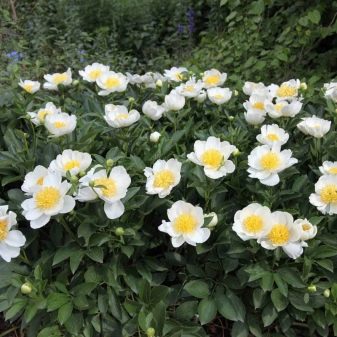
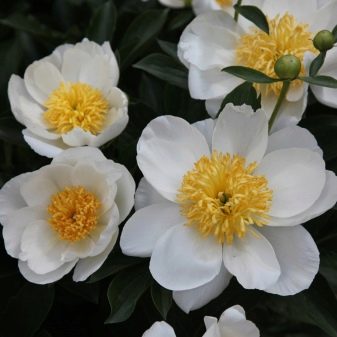
"Rome"
The bright pink bud is ideal for bouquets, so the variety is in demand among florists.
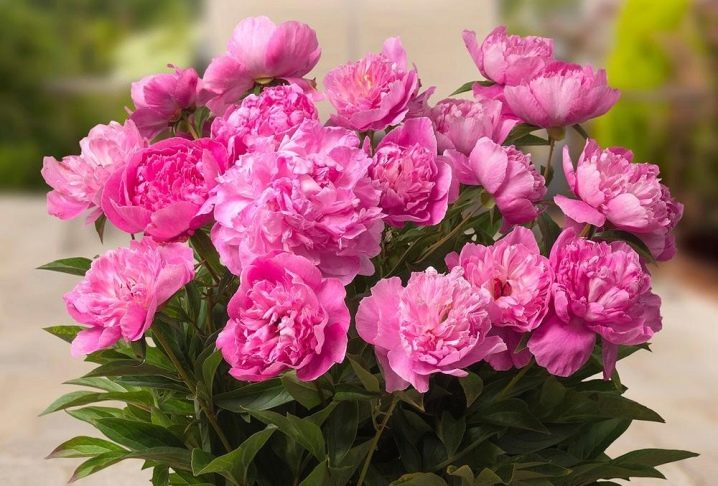
Planting and leaving
Caring for peonies is easy. Flowers delight with their beauty for about a week, somewhere between late spring and early summer. Caring for the plant involves planting in a sunny spot in organic, well-drained soil.
Planting is done in pits 60 mm deep, organic material is laid out on the bottom. If you plant the tubers too deep or, conversely, close to the surface, then it is possible that the flower will not bud.
Transplanting peonies is not recommended, these flowers do not like to change location. Flowering begins only a few years after planting.
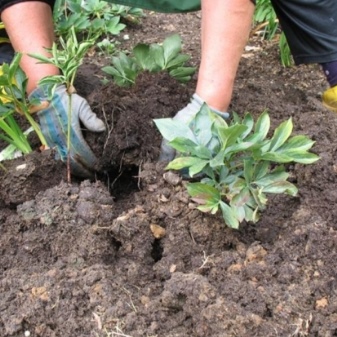
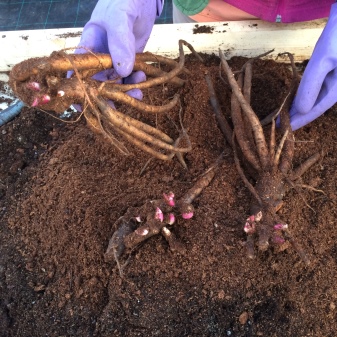
The peony is divided in the fall, when flowering stops, the procedure is carried out every few years, thus it is possible to multiply one variety in its own area. The procedure is very simple, with a sharp knife they divide the tubers, leaving from 3 to 5 bulbs on each bush.
Watering is carried out once a week, in warm regions of the country - 2 times. The most important thing is that the soil should not dry out, but at the same time the water should not stagnate either, for this it is better to mix dense soil with a small amount of sand.
Winter mulching is necessary in colder areas where snow does not cover the ground.
In this case, the needles or tree bark helps to keep the tubers from frost. Mulch is removed with the onset of spring.
Insect control when caring for peonies is minimal, but peony flowers can be infected with fungi, for example, late blight or leaf spot. These infections damage stems, leaves, and flowers. With a strong defeat of the bush, it must be eliminated. As a prevention of fungal infection, it is worth using fungicide, insecticides help from insects.
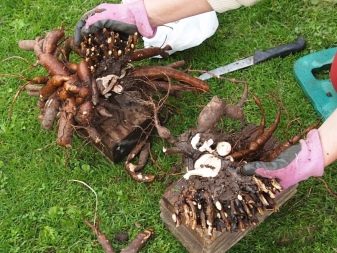

Advice
Experienced growers give their advice on growing and caring for peonies.
- The flower can be planted in spring and autumn, only spring seedlings will be stunted.
- It is necessary to plant the tuber in a well-prepared pit with compost or peat moss.
- Peonies do not require a lot of fertilization. For the first time, organic material is introduced during planting, then only after a few years.
- It will be necessary to plant the plant further from trees and shrubs, which will take minerals and moisture from the soil.
- The distance between the peony bushes should be at least a meter, this will ensure high-quality air circulation.
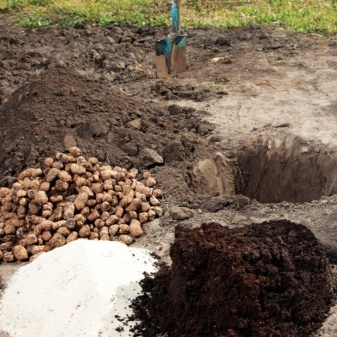
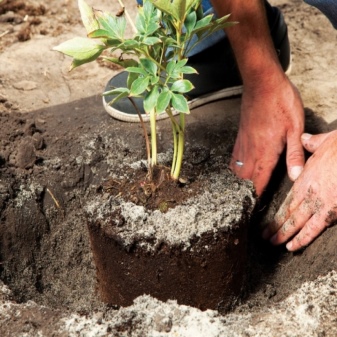
See below for useful information on the care and planting of peonies.







































































































The comment was sent successfully.